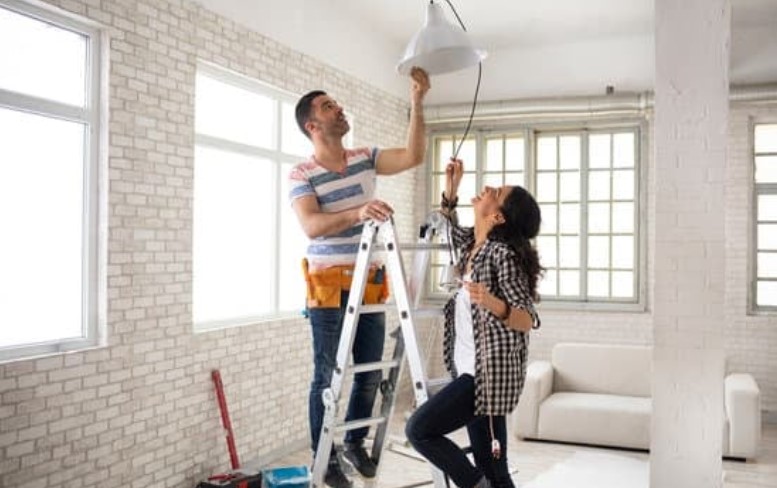Welcome to our blog post on the Home Accessibility Tax Credit (HATC)! If you or someone you know is looking to make their home more accessible, functional, and safe, then this tax credit could be just what you need. In this article, we’ll explore what exactly the HATC is, how it works, and who is eligible to claim it. We’ll also discuss the types of expenses that can be claimed and provide step-by-step instructions on how to claim the credit. So let’s dive in and uncover all there is to know about the Home Accessibility Tax Credit!
What is the Home Accessibility Tax Credit?

The Home Accessibility Tax Credit (HATC) is a fantastic opportunity for individuals to receive financial assistance when it comes to making their homes more accessible and functional. This non-refundable tax credit applies to eligible renovation or alteration expenses that aim to improve mobility, functionality, and safety within the dwelling.
Whether it’s installing grab bars and handrails, widening doorways for wheelchair accessibility, or even lowering cabinets for easier reach, the HATC covers a wide range of qualified renovations that can truly make a difference in someone’s daily life. The primary goal is to enhance accessibility and reduce any potential risks or limitations faced by qualifying individuals within their own homes.
The Current Rules of HATC
The rules surrounding the Home Accessibility Tax Credit (HATC) are an important factor to consider when looking to claim this tax credit. The HATC is calculated by applying the lowest personal income tax rate, which currently stands at 15% in 2022, to eligible expenses incurred for a qualifying renovation of an eligible dwelling.
Essentially, you can claim a tax credit of up to $1,500 based on these calculations. However, there is a cap on the total amount that can be claimed each year. This cap is set at the lesser of $10,000 or the total eligible expenses for the taxation year.
It’s crucial to note that only expenses related to work performed or goods acquired for a qualifying renovation will be considered eligible. This means that routine maintenance and household appliances won’t count towards your claim.
By understanding these current rules of HATC, you can ensure that you meet all requirements and make full use of this tax credit opportunity. Remember to keep track of your expenses and consult with a professional if needed.
What Types of Expenses Can Be Claimed?
When it comes to claiming expenses for the Home Accessibility Tax Credit (HATC), it’s important to know which renovations are eligible. Generally, any qualifying renovation that improves accessibility or permanently enhances safety can be claimed. This means that you could potentially receive a tax credit for those much-needed improvements that make your home more accessible and secure.
Examples of qualified renovations include the installation of grab bars and handrails, walk-in tubs or wheel-in showers, widening doorways for wheelchair accessibility, and lowering cabinets for easier reach. These modifications aim to make daily tasks safer and more manageable for individuals with mobility issues or disabilities.
However, it’s worth noting that not all expenses will qualify under the HATC. Ineligible expenses include household appliances or home entertainment devices, routine maintenance tasks like painting walls or fixing leaky faucets, as well as general housekeeping costs.
What are the Eligibility Criteria for the HATC?

To be eligible for the Home Accessibility Tax Credit (HATC), there are certain criteria that individuals need to meet. First and foremost, seniors aged 65 years or older automatically qualify for this credit. This is great news for our beloved elders who may require renovations to make their homes more accessible.
In addition to seniors, taxpayers who hold a valid Disability Tax Credit (DTC) are also considered qualified individuals. The DTC is a certificate issued by the government to recognize individuals with disabilities and provide them with various tax benefits.
If you are supporting someone who qualifies directly for the HATC, such as an elderly family member or individual with a disability, you may be entitled to claim this credit on their behalf. This can help alleviate some of the financial burdens they may face when making necessary accessibility modifications.
Furthermore, if you claim the amount for an eligible dependant or caregiver amount, or if you have infirm dependants age 18 or older who qualify as qualifying persons under your care, you may also be eligible for the HATC.
How to Claim Home Accessibility Tax Credit (HATC)?
To claim the Home Accessibility Tax Credit (HATC), you’ll need to follow a few simple steps. Make sure you fill out line 31285 of your tax return and complete schedule 12 for Home Accessibility Expenses specific to your province. It’s important to check if your province offers any additional credits, such as Quebec’s credit for Home Support Services for Seniors.
When filling out the forms, provide accurate information about the dates, types of expenses, and names (along with their GST/HST numbers) of contractors or tradespeople who performed the renovation. Remember that if you completed the work yourself, you can only claim expenses for supplies and not your labour.
If a family member undertook the renovations instead, they must be registered for goods and services tax/harmonized sales tax (GST/HST) to claim labour costs. Make sure to include their GST/HST number on the HOME Worksheet along with their name.
By following these steps and providing all necessary information, you can ensure that your HATC claim is processed smoothly and accurately.
How Much Can I Claim for the HATC?
The Home Accessibility Tax Credit (HATC) can be a significant financial benefit for individuals looking to make their homes more accessible and safe. But how much can you claim for the HATC? Let’s break it down.
The amount of the HATC is calculated as 15% of your qualifying expenses. This means that if you spend $5,000 on eligible home renovations or alterations, you would be eligible to claim a tax credit of $750. It’s important to note that this credit is non-refundable, meaning it can only reduce your tax liability and cannot result in a cash refund.
However, there is also a maximum limit on how much you can claim through the HATC in a given year. Currently, this maximum limit stands at $10,000 per year. So even if your qualifying expenses exceed this amount, you will only be able to claim up to $1,500 in tax credits.
Double Credit

Many accessibility renovations also qualify as medical expenses. This means that you may be able to claim the same expense for both the Home Accessibility Tax Credit (HATC) and as an eligible medical expense. It’s like hitting a tax return trifecta!
Imagine being able to maximize your savings by claiming the same expense not once, not twice, but three times on your tax return. That’s right – in some provinces like British Columbia and New Brunswick, you can even get an additional provincial credit on top of the HATC and medical expense deductions.
If your accessibility renovation qualifies as a medical expense under the Income Tax Act, you can claim it as such on your tax return. But here’s where things get even better – you can also include it in your HATC calculations.
This means that those grab bars or handrails installed in your bathroom could potentially be claimed for all three credits: HATC, medical expenses deduction, and provincial credit. It’s a win-win situation that allows you to save even more money while improving accessibility in your home.
It’s important to note that not all provinces offer an additional provincial credit for accessibility renovations. However, if you live in British Columbia or New Brunswick (and possibly other provinces), make sure to take advantage of this tripled-up benefit!
Conclusion
The Home Accessibility Tax Credit (HATC) is a valuable opportunity for eligible individuals to receive financial support for home renovations and alterations that improve accessibility and safety. This non-refundable tax credit can help make homes more suitable for seniors and individuals with disabilities, allowing them to live comfortably and independently.
Overall, the Home Accessibility Tax Credit offers significant financial benefits while promoting inclusivity by making homes more accessible for all Canadians. Consider taking advantage of this opportunity during tax season if you meet the eligibility criteria outlined above. Consult with a tax professional or refer to official government guidelines when preparing your claims to ensure accuracy and maximize your potential tax savings.
FAQs – How to Claim Home Accessibility Tax Credit (HATC)?
1. What is a home accessibility tax credit?
The Home Accessibility Tax Credit (HATC) is a non-refundable tax credit available to Canadian taxpayers who make qualifying expenditures to make their homes more accessible to a person with a disability.
2. Can you claim Home accessibility tax credit?
Yes, you can claim the HATC if you are a Canadian taxpayer who meets all of the following criteria:
- Are a resident of Canada.
- Have a valid Social Insurance Number (SIN).
- Have claimed the disability tax credit in at least one of the previous 10 years.
- Have incurred qualifying expenses to make your home more accessible to a person with a disability.
3. What is an example of the home accessibility tax credit?
Some examples of qualifying expenses for the HATC include:
- Renovations to make the home more accessible, such as widening doorways, installing ramps, and adding grab bars.
- Assistive devices, such as wheelchairs, walkers, and lifts.
- Home modifications to accommodate a service animal.
4. What is the Home accessibility tax credit in Ontario?
The HATC is available in all provinces and territories in Canada. However, the maximum amount of the credit and the qualifying expenses vary from province to province.
In Ontario, the maximum amount of the HATC is $10,000 per year. The qualifying expenses include the same expenses as those listed above.











